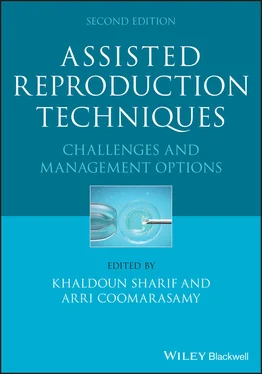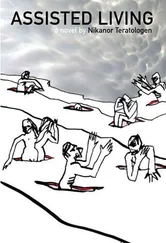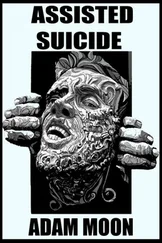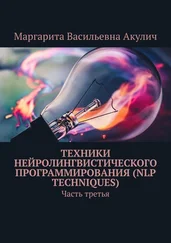More evidence has accumulated since the first edition, and all chapters have been updated, with the addition of new ones. As well as covering the counseling, medical, surgical and laboratory steps of ART, this edition also addresses training issues, organizational and business skills, and social media use.
IVF and other assisted reproduction techniques (ART) involve counseling, medical, surgical and laboratory steps, all contributing to the eventual potential success of the process. As sure as night follows day, at each step various challenges could be encountered.
The aim of this book is to stimulate resourceful thinking in the ART practitioner when dealing with those challenges, by outlining various management options, the reasoning behind them, and the evidence on which they are based. The practitioner would then be better equipped to choose the most suitable solution that best fits the needs of each particular patient.
This is intended to be a highly practical manual, providing viable solutions to real‐life ART problems. To this end, the major sections of the book have been written mirroring the patient’s journey in the ART process. In addition, each chapter has been written concisely, starting with one or more case histories outlining the problem, followed by a discussion on how the problem occurred, how it could have been prevented, what management options are available, and the reasoning and evidence behind them.
Also, high‐quality medical care involves not only doing the right thing but also explaining it clearly to patients and answering their questions. Accordingly, we have included in each chapter a list of patients’ questions and their suggested answers.
How will you get the most out of this book? We suggest you read the case history and work out some management solutions yourself before reading the rest of the chapter. Compare and contrast your solutions with the options provided in the book. Discuss with your colleagues – seniors and juniors; nurses, counselors, embryologists, and clinicians.
| ABOG |
American Board of Obstetrics and Gynecology |
| ACOG |
American College of Obstetricians and Gynecologists |
| ACS |
acute coronary syndrome |
| ADHD |
attention‐deficit hyperactivity disorder |
| AFC |
antral follicle count |
| AHR |
adjusted hazard ratio |
| AMH |
anti‐Müllerian hormone |
| anti‐HBc |
hepatitis B core antibody |
| APA |
antiphospholipid antibodies |
| ART |
assisted reproduction techniques |
| AS |
Asherman syndrome |
| ASD |
autism spectrum disorder |
| ASRM |
American Society for Reproductive Medicine |
| BMI |
body mass index |
| BNF |
British National Formulary |
| BOT |
borderline ovarian tumor |
| c‐TESE |
conventional‐testicular sperm extraction |
| CBAVD |
congenital bilateral absence of the vas deferens |
| CBRC |
cross border reproductive care |
| CCS |
childhood cancer survivors |
| CFTR |
cystic fibrosis transmembrane regulator |
| CGH |
comparative genomic hybridization |
| CI |
confidence interval |
| CMV |
cytomegalovirus |
| COCP |
combined oral contraceptive pill |
| COS |
controlled ovarian stimulation |
| CT |
computerized tomography |
| CVS |
chorionic villus sampling |
| DCM |
dilating cardiomyopathy |
| DHEA |
dehydroepiandrosterone |
| DI |
donor insemination |
| DVT |
deep venous thrombosis |
| ECF |
endometrial cavity fluid |
| ED |
erectile dysfunction |
| EFS |
empty follicle syndrome |
| EMT |
endometrial thickness |
| EP |
ectopic pregnancy |
| ER |
estrogen receptor |
| ERA |
endometrial receptivity array |
| ESG |
European Society of Gynecology |
| ESGE |
European Society for Gynaecological Endoscopy |
| ESHRE |
European Society of Human Reproduction and Embryology |
| ET |
embryo transfer |
| FDA |
Food and Drug Administration |
| FET |
frozen embryo transfer |
| FGR |
fetal growth restriction |
| FISH |
fluorescence in situ hybridization |
| FSH |
follicle stimulating hormone |
| GA |
general anesthesia |
| GEA |
global endometrial ablation |
| GH |
growth hormone |
| GnRH |
gonadotropin releasing hormone |
| HARRT |
highly active antiretroviral therapy |
| HBsAg |
hepatitis B surface antigen |
| HBV |
hepatitis B virus |
| hCG |
human chorionic gonadotropin |
| HCM |
hypertrophic cardiomyopathy |
| HCV |
hepatitis C virus |
| HFEA |
Human Fertilisation and Embryology Authority |
| HIV |
human immunodeficiency virus |
| HL |
hyperreactio luteinalis |
| HMG |
human menopausal gonadotropin |
| HPO |
hypothalamic‐pituitary‐ovarian |
| HPV |
human papilloma virus |
| HSG |
hysterosalpingogram |
| HTA |
Human Tissue Authority |
| HyCoSy |
hystero‐contrast sonography |
| ICSI |
intra‐cytoplasmic sperm injection |
| IUI |
intrauterine insemination |
| IUP |
intrauterine pregnancy |
| IVF |
in vitro fertilization |
| IVM |
in vitro maturation |
| KS |
Klinefelter syndrome |
| LDA |
low dose aspirin |
| LH |
luteinizing hormone |
| LLETZ |
large loop excision of transformation zone |
| LMWH |
low molecular weight heparin |
| LPS |
luteal phase support |
| MBMS |
multiple birth minimization strategy |
| MFPR |
multifetal pregnancy reduction |
| micro‐TESE |
micro‐dissection testicular sperm extraction |
| MNC‐IVF |
modified natural cycle IVF |
| MRI |
magnetic resonance imaging |
| MTHFR |
methylene tetrahydro‐folate reductase |
| NC‐IVF |
natural cycle IVF |
| NGS |
next generation sequencing |
| NHS |
National Health Service |
| NICE |
National Institute for Health and Care Excellence |
| NNT |
number needed to treat |
| NTPR |
National Transplant Pregnancy Registry |
| OHSS |
ovarian hyperstimulation syndrome |
| OR |
odds ratio |
| ORT |
ovarian reserve test |
| OTC |
ovarian tissue cryopreservation |
| PCA |
patient controlled analgesia |
| PCC |
preconception care and counseling |
| PCOS |
polycystic ovary syndrome |
| PESA |
percutaneous epidydimal sperm aspiration |
| PGH |
preimplantation genetic haplotyping |
| PGS |
preimplantation genetic screening |
| PGT |
preimplantation genetic testing |
| PGT‐A |
preimplantation genetic testing for aneuploidy |
| PGT‐M |
preimplantation genetic testing for monogenic disorders |
| PGT‐SR |
preimplantation genetic testing for structural chromosomal rearrangements |
| PID |
pelvic inflammatory disease |
| POR |
poor ovarian response |
| POSEIDON |
patient‐oriented strategies encompassing individualized oocyte number |
| PrEP |
pre‐exposure prophylaxis |
| PRL |
prolactin |
| PSR |
posthumous sperm retrieval |
| PUL |
pregnancy of unknown location |
| r‐FSH |
recombinant follicle stimulating hormone |
| RCOG |
Royal College of Obstetricians and Gynaecologists |
| RCT |
randomized controlled trial |
| RIF |
recurrent implantation failure |
| ROS |
reactive oxygen species |
| RR |
relative risk |
| SART |
Society for Assisted Reproductive Technologies |
| SHBG |
sex hormone binding globulin |
| SLE |
systemic lupus erythematosus |
| SMI |
social media influencer |
| SSR |
surgical sperm retrieval |
| TESA |
testicular sperm aspiration |
| TESE |
testicular sperm extraction |
| TFF |
total fertilization failure |
| TFNA |
testicular fine needle aspiration |
| TIVA |
total intravenous anesthesia |
| TMET |
transmyometrial embryo transfer |
| TPO |
thyroid peroxidase |
| TSH |
thyroid stimulating hormone |
| TVOR |
transvaginal oocyte retrieval |
| UAE |
uterine artery embolization |
| VEGF |
vascular endothelial growth factor |
| VTE |
venous thromboembolism |
| VZV |
varicella zoster virus |
| WGA |
whole genome amplification |
| WHO |
World Health Organization |
| YCMD |
Y chromosome microdeletion |












